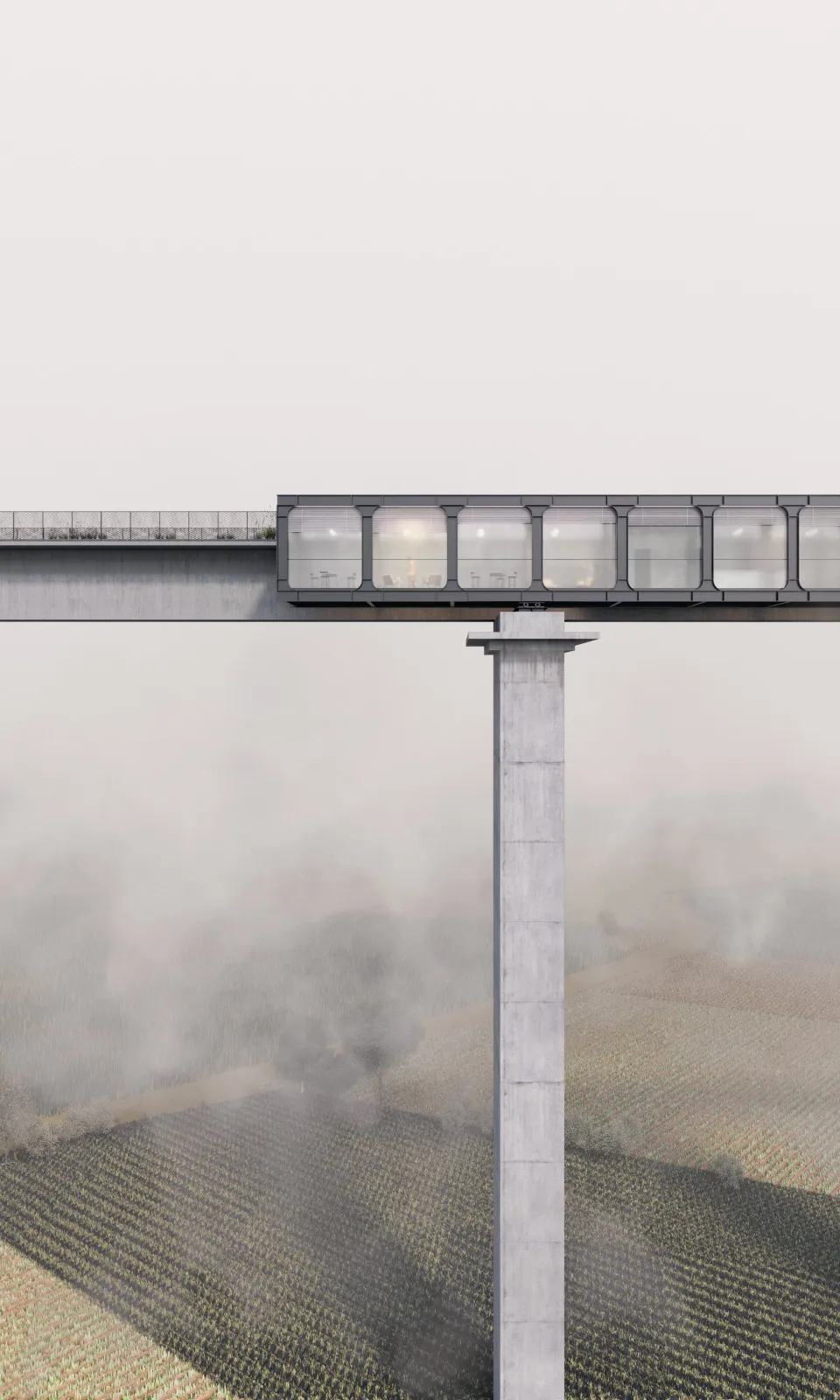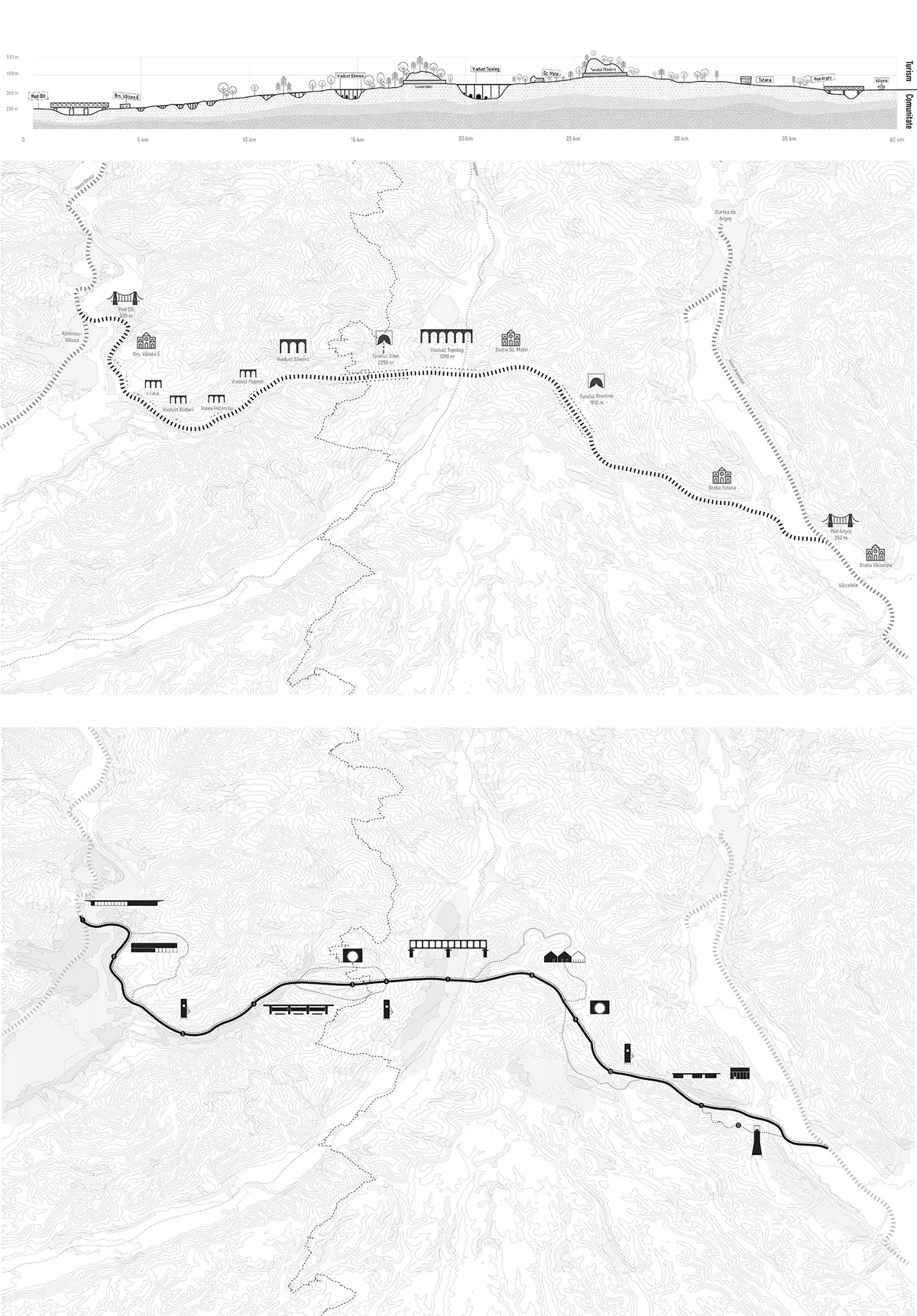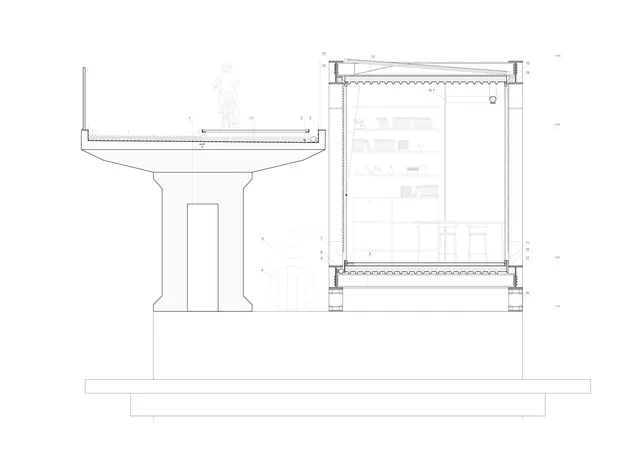
1/10

2/10

3/10

4/10

5/10

6/10

7/10

8/10

9/10

10/10

Author(s) / Team representatives
Afloarei Ioana
Profession
Architect
Co-authors/team members
Îndrumător: Alexandru Fleșeriu
Project location
Calea ferată Râmnicu-Vîlcea-Vâlcelele Județele Argeș și Vâlcea, România
Area
41 km
Project start date
Ianuary 2023
Project completion date
July 2023
Photo credits
Ștefania Boca, Marius Vasile
Text presentation of the author/office in English
I’m Ioana Afloarei, a graduate of the Cluj-Napoca Faculty of Architecture and Urban Planning, and I am currently working as an architect in the same city. Throughout my study years, my curiosity took me through the experience of volunteering, architecture competitions, and experience exchange, both for study, as well as for practice. The subjects that raised the most interest for me were those that, besides their architectural challenges, managed, in their complexity, to raise problems such as understanding communities or that required the development of territory-scale strategies. In my search for a diploma project subject, I chose to tackle a situation that seemed to offer the chance to pursue these interests further and try to understand their complexity.
Project description in English
The abandoned railway from the Topolog Valley is part of the long list of unfinished projects resulting from the change of the political regime in 1989. Developed on a distance of over 40 km, The Râmnicu-Vâlcea-Vâlcelele railway line was one of the most complicated works of infrastructure made during the communist period. The line was built at that time with huge efforts and crosses three valleys in the subcarpathian area. Although the project was 90% completed, it was soon abandoned, with no train ever crossing it’s tracks.
The abandoned infrastructures, scattered across the land, are left as an absurd heritage for the communities for whom they once meant hope for change. Following their path, we encounter a dialogue between the structures and the territory they are set in, a contrast that can be both problematic and spectacular. Four stations, two bridges over the Olt and Argeș rivers, as well as two of the longest railway tunnels in Romania were built to serve this route. But perhaps the most spectacular infrastructures are the twelve viaducts that cross the valleys, And among them, the longest railway viaduct in Romania, the Topolog Viaduct. With a length of over 1500 m, it crosses the center of the village, through people’s yards, at a height of over fifty meters, becoming a kilometer-long ruin hardly absorbed by the rural world in which it is placed.
The challenge of the project is to transform a series of abandoned infrastructures that should have served rail traffic at a national level into one that can serve the communities it passes through at a regional and local level. The project proposes a formal and coherent tourist route through punctual interventions in ten key locations to mediate the intersection between the anthropic and the natural environment. On the territorial scale, the abandoned infrastructure would change from a disruptive element to a connecting element for the communities, covering the wounds of a difficult time and acknowledging its history and potential.



